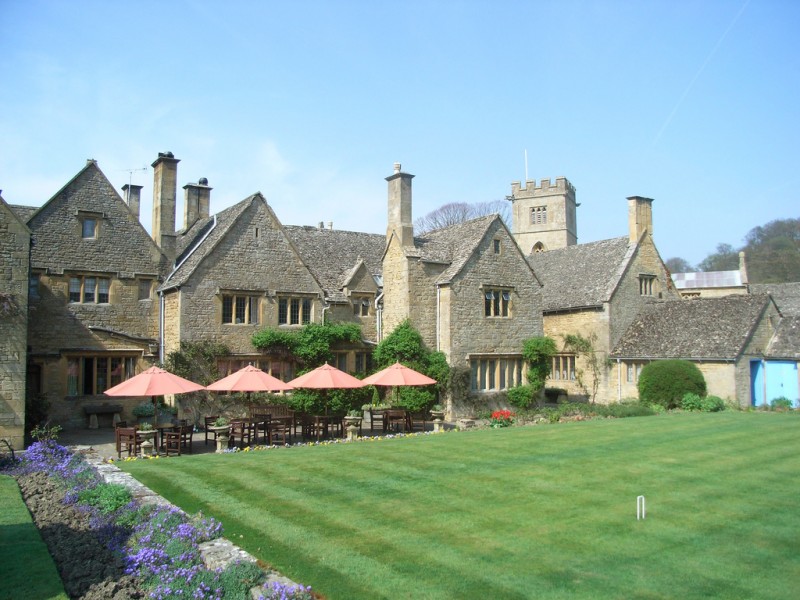Grassy lawns exist to prove you’re not a peasant. It’s time to let that status symbol die

English manor lawn. English manor lawn by miss insomnia tulip licensed under Creative Commons.
This article was first published on July 26, 2017. Even though summer recently ended, we thought it would be neat to look back on this piece about lawns and zoning.
Hundreds of years ago, grassy lawns originally became popular to prove a person was wealthy enough to waste land rather than farm on it. That status symbol no longer applies, since we no longer live in a sustenance farming economy, yet it’s still mandated by law all over America.
How lawns became status symbols
Back in 17th Century England, the aristocracy was busy converting the old fortified castles of the feudal world into the countryside manor houses of the industrial age. Aristocrats didn’t want anybody to think they might be mere farmers, so instead of crops they planted grass on the most visible parts of their properties. Only a rich person could waste land like that.
It was a bit like Americans who bought giant SUVs when gas was $4 a gallon, to show off how they didn’t care about the price.
When the English colonized America they brought their status symbols with them. Thus the plantation home, America’s version of the English manor house, inevitably included a prominent grassy lawn. Our founding fathers—the southern ones, at least—loved them.
Washington had one at Mount Vernon, Jefferson had one at Monticello, etceteras. Naturally, lawns have been desirable ever since.
Lawns can be fun, but shouldn’t be mandatory
Of course, lawns aren’t only status symbols. They’re fun. We put them in our parks because walking barefoot to a picnic is pleasant. We have private yards because sometimes children should play backyard football rather than Madden NFL.
Unlike other fads or short-lived status symbols, lawns have had centuries-long staying power because lawns are inherently nice. People like them, and that’s OK.
But it doesn’t take much digging to find proof that sometimes the status symbol is still more important than what people actually want.
If you own a house and want a grassy lawn, that’s great. Lucky for you, most communities’ laws allow that.
But what if you don’t want one? What if you’re a homeowner and you’d rather pave your front yard and use it as a patio? Or plant some corn? Or maybe you just think grass is a “soul-crushing timesuck.”
A front yard farm in Mount Ranier, MD. This would be illegal in many communities. Image by the author.
In that case, sorry, you’re usually out of luck. Most zoning codes require lawns, and many don’t allow much deviation from grass. All across America, town zoning officials go after homeowners who try to use their front lawns, rather than simply look at them.
Therein lies the persisting status symbol of grassy lawns. Therein lies what we could do without.
Zoning, especially suburban zoning, often mandates that front yards remain mostly decoratively landscaped. Patios, playgrounds, parking, agriculture, or other more functional spaces can only take up a minority percentage, or they’re pushed to the back yard where neighbors won’t have to see land go to productive use. And when the law doesn’t require that, homeowners associations often do.
Property values, enforced homogeneity, or whatever other explanations one might think of to justify requiring a grass lawn all come down to the status symbol. If it were about homeowner’s preferences, lawns would be allowed but not required.
When status symbols are mandated by law they’re not powerful status symbols anyway, so what’s the point?
